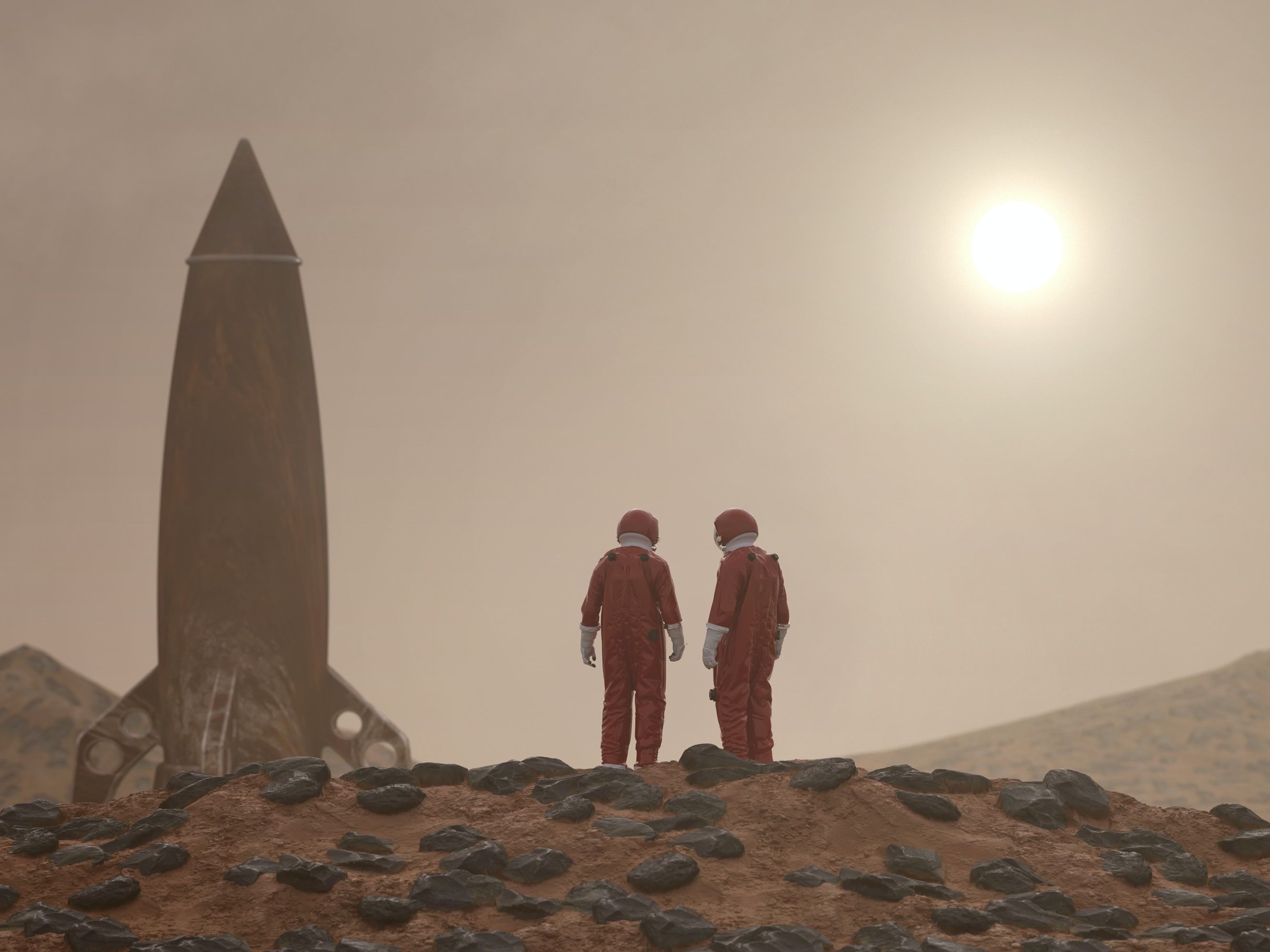Human colonization of Mars has been a popular theme in science fiction for decades. But, in recent years, the possibility of sending humans to live on Mars has become very real.
With multiple private companies and government agencies working in this space, we could see people being sent to Mars in the near future. But what technology needs to be in place to make it happen?
In this article, we’ll take a look at some of the technologies that will enable humans to live on Mars.
Nuclear Propulsion
The first step is being able to make it to Mars. The average distance from Earth to Mars is around 140 million miles and the trip currently takes between six and eight months to complete. Transport to Mars would have to sustain a small to medium group of people for that duration, for the time that they’re on Mars, and for the return journey.
The longer the journey, the more expensive, difficult, and dangerous the journey is. Fuel, life support systems, and food must all last this duration. So, to make the trip quicker, NASA is working on more effective propulsion systems—which use nuclear thermal propulsion.
Nuclear thermal propulsion provides twice the efficiency of current technology. A propellant like liquid hydrogen is heated up via a nuclear reactor. As the hydrogen is converted into gas, it provides thrust via a nozzle, propelling the spacecraft.
Inflatable Heat Shields
Because a spacecraft will have to be very large to support people on the trip to Mars, landing it will be extremely difficult. This is especially true because of the differences in the Martian atmosphere compared to Earth. Because it’s thinner, a spacecraft will descend much faster than on Earth and typical technology like parachutes won’t work to slow the descent.
Currently, heat shields are rigid metal structures that take the brunt of the heat during re-entry into an atmosphere. As the speed is so high, the friction causes immense temperatures to build up at the front of the spacecraft. A heat shield radiates heat away from the spacecraft and protects the underlying spacecraft. This kind of heat shield is simply too bulky to be applicable to a spacecraft of the size necessary for human transportation to Mars.
This is where inflatable heat shields come in. An inflatable heat shield, like the one that NASA is developing, could improve this process drastically. Called the Low-Earth-Orbit Flight Test of an Inflatable Decelerator (LOFTID), this inflatable heat shield is six meters wide, made up of synthetic fibers 15 times stronger than steel, and is designed to unfold and inflate as the spacecraft enters Mars’ atmosphere. Taking up less space than a traditional heat shield, yet being larger on inflation, will enable us to land on Mars safely.
Protection From the Martian Atmosphere
The Martian landscape is inhospitable to humans. Science fiction has provided plenty of solutions to this problem. But what would it look like in real life?
The Martian atmosphere is thinner, and much colder, and made up of over 95% carbon dioxide, with only 0.13% oxygen. And, there are much higher levels of radiation. This means that people are going to have to live inside self-sustaining habitats.
Firstly, the habitats will have to be able to create and recycle the right proportions of gases for humans to breathe. The main method that’s been suggested is by recycling the nitrogen and argon that’s present in the Martian atmosphere and adding oxygen to it. The proportion could be 40% nitrogen, 40% argon, and 20% oxygen.
But to get these gases from the atmosphere, carbon dioxide will have to be “scrubbed” (removed) from the air. Further, oxygen needs to be produced by removing it from the water that already exists on Mars or by bringing it from Earth.
Finally, with the added solar radiation on Mars, there will need to be some kind of radiation protection for Martian inhabitants. Two suggested methods are a radiation shield (which is heavy and hard to transport from Earth to Mars) or living underground in Martian caves or lava tubes. An inflatable “doorway” is being developed that can provide an airtight section of underground systems for precisely this reason.
Staying Warm and Keeping Fit
The average temperature on Mars is -80 degrees Fahrenheit, or -62.2 degrees Celsius. And temperatures can swing drastically; while it might be -100ºF (-73ºC) at night, daytime temperatures could reach +70ºC (c.21ºC). This means that temperature control will be one of the major challenges of a Martian habitat.
The gravity on Mars is quite weak (only 38% of Earth’s). The weaker gravity means that people living on Mars have a higher chance of losing bone density, which drastically increases the chance of fractures. And this isn’t including the months spent in zero gravity on the trip to Mars.
To survive long periods in microgravity, astronauts need to exercise consistently. NASA is exploring space suits with added resistance to counteract this. In the meantime, astronauts from the US and Russia are undergoing year-long studies on the space station so that we can better understand the effects of the lower gravity on the human body, and if we can adapt.
Water, Food and Fuel Production
Water does exist on Mars, though much of it is saline. This means that desalination will be necessary to make water safe to drink. All water would hypothetically be recycled, as this is more energy-efficient than collecting and desalinating more water. But what about plants?
The surface of Mars has all the necessary components for the cultivation of plants. It has water and organic compounds that plants need to survive. But it does not have a hospitable atmosphere. Greenhouses that efficiently produce a plant-suitable atmosphere will be a top priority, as this will be the only way to generate food on Mars.
Everything we’ve mentioned requires fuel to produce energy. The most likely method for fuel production will be once again utilizing the water that’s already on Mars. Water can be split into hydrogen and oxygen. Oxygen can be utilized in creating a hospitable atmosphere, while hydrogen is an effective propellant. So, before sending people, it will be necessary to prepare an automated hydrogen processing plant to ensure that fuel is available.
So, Can Humans Live On Mars?
The answer is yes—but not easily. There are many challenging obstacles in the way. Getting to and from Mars, surviving the harsh environment, and producing food, water, and fuel are the main challenges.
Even though this sounds insurmountable, scientists are optimistic. In fact, Elon Musk has stated that SpaceX may send astronauts to Mars as soon as 2024. And while the first few missions will probably only involve living on Mars for a short period, that’s still an incredible feat!





